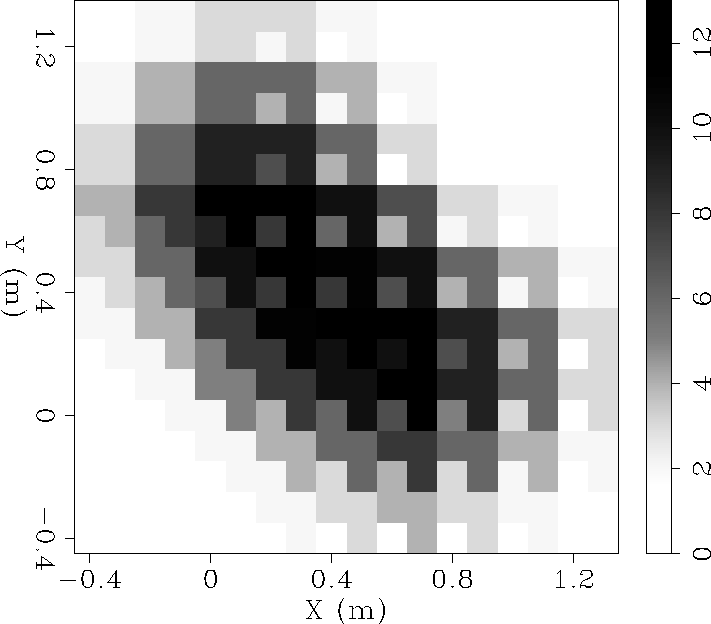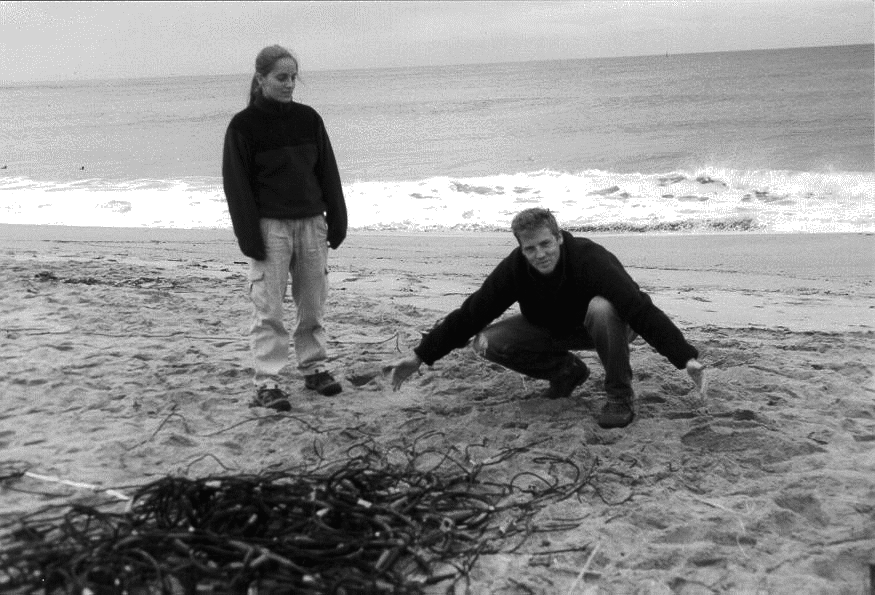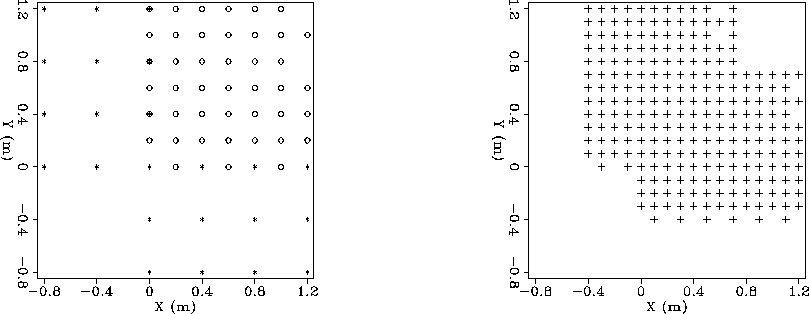




Next: Data processing
Up: Rickett & Bachrach: High-resolution
Previous: Introduction
We set out our 60 geophones in a  array with 4 empty
locations. Geophone spacing was 20 cm in both X and Y directions.
We then recorded shots at 23 locations spaced 40 cm apart, keeping the
receiver geometry fixed. Shots consisted of 7 pings with a small
hand-held hammer on a metal plate.
Figure 2 shows a photograph of the study area, and
the receiver array.
Source and receiver geometry is shown in the left panel of
Figure 3.
monterey
array with 4 empty
locations. Geophone spacing was 20 cm in both X and Y directions.
We then recorded shots at 23 locations spaced 40 cm apart, keeping the
receiver geometry fixed. Shots consisted of 7 pings with a small
hand-held hammer on a metal plate.
Figure 2 shows a photograph of the study area, and
the receiver array.
Source and receiver geometry is shown in the left panel of
Figure 3.
monterey
Figure 2 Photograph of study area and
very high-resolution 3-D receiver array.

This acquisition geometry led to a CMP spacing of 10 cm, as shown on
the right panel in Figure 3. The fold map
(Figure 4) is somewhat
irregular as may be expected given the low number of shots; however,
the fold ranges from about 6 to 13 in the main diagonal swath, which
is 0.8 m wide and 1.2 m long.
geometry
Figure 3 The left panel shows shot (*) and
receivers ( ) locations. The right panel shows CMP locations.
) locations. The right panel shows CMP locations.





fold
Figure 4 Fold chart with 0.1 cm bins.
|
|  |










Next: Data processing
Up: Rickett & Bachrach: High-resolution
Previous: Introduction
Stanford Exploration Project
7/5/1998



